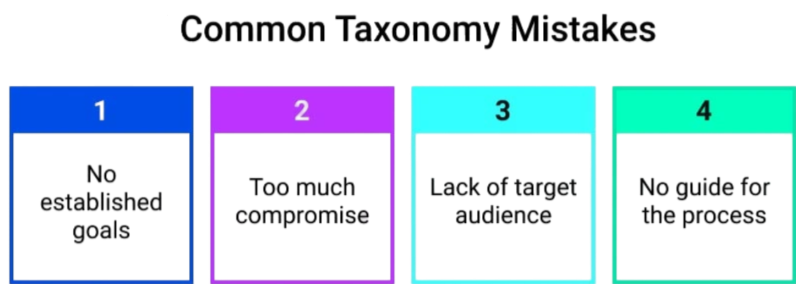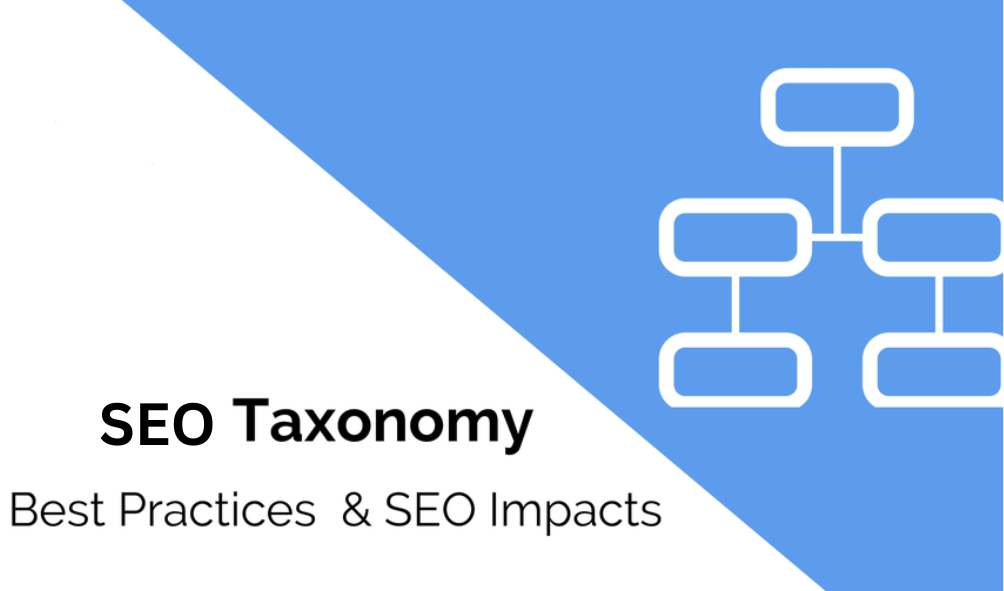In the vast digital landscape, where websites compete for attention, SEO taxonomy emerges as a crucial tool for successful digital marketing. This comprehensive guide aims to unravel the power of SEO taxonomy and its significance in driving organic traffic and improving search engine rankings. By understanding the principles and best practices of SEO taxonomy, businesses can optimize their online presence and enhance their overall digital marketing strategy.
Understanding SEO Taxonomy
SEO taxonomy is the process of organizing and categorizing content on a website to improve its visibility and relevance in search engine results. We will delve into the definition and basics, including its application in search engine optimization.
What is Taxonomy in General?
Taxonomy refers to the classification and organization of information into structured categories and subcategories. It provides a systematic way of organizing data, making it easier to find and navigate.
Application of Taxonomy in SEO
In SEO, taxonomy involves structuring website content using relevant keywords, categories, subcategories, tags, and metadata. This helps search engines understand and connect the content with relevant search queries.
Components of SEO Taxonomy
To create an effective SEO taxonomy, it is important to understand its key components:
Keywords and Phrases
Keywords play a vital role in SEO taxonomy. They are the terms and phrases that users enter into search engines to find information. By incorporating relevant keywords into website content, businesses can improve their visibility in search engine results.
Categories and Subcategories
Categories and subcategories provide a hierarchical structure to organize content. They allow users to navigate through the website easily and enable search engines to understand the relationships between different pages.
Tags and Metadata
Tags and metadata provide additional context and information about the content. They help search engines categorize and index the content accurately, making it more discoverable to users.
The Role of SEO Taxonomy in Search Engines

Understanding how search engines use SEO taxonomy is crucial for optimizing website content and improving search engine rankings.
A. How Search Engines Use Taxonomy
Crawling and Indexing
Search engines use taxonomy to crawl and index websites efficiently. By following the structured hierarchy of categories and subcategories, search engine bots can navigate through the website and index the content accurately.
Enhancing User Experience
SEO taxonomy improves user experience by providing a clear and logical structure for website navigation. Users can easily find the information they need, leading to increased engagement and lower bounce rates.
B. Impact on Search Engine Rankings
Effective SEO taxonomy can have a significant impact on search engine rankings.
Improved Visibility
By organizing content using relevant keywords, categories, and subcategories, businesses can increase their visibility in search engine results. This leads to higher click-through rates and more organic traffic.
Better Categorization
Search engines categorize websites based on their taxonomy. A well-structured SEO taxonomy helps search engines understand the content and connect it with relevant search queries, resulting in better categorization and improved rankings.
Creating an Effective SEO Taxonomy
To make the most of SEO taxonomy, businesses should follow best practices in creating an effective taxonomy that aligns with their digital marketing goals.
A. Keyword Research
Tools for Keyword Research
Keyword research tools such as Google Keyword Planner, SEMrush, and Moz Keyword Explorer can help identify relevant keywords and phrases that align with the target audience’s search intent.
Long-Tail Keywords
Incorporating long-tail keywords, which are more specific and less competitive, can enhance the effectiveness of SEO taxonomy and attract targeted organic traffic.
B. Organizing Content
Hierarchy and Structure
Organize content using a logical hierarchy and structure. This helps search engines understand the relationships between different pages and improves user navigation.
Internal Linking Strategies
Implementing internal linking strategies within the taxonomy can help distribute link equity and improve the discoverability of related content.
C. Importance of User Experience
Navigational Clarity
Ensure that the taxonomy provides clear and intuitive navigation for users. This includes logical category names, breadcrumbs, and user-friendly URLs.
Mobile-Friendly Taxonomy
Optimize the taxonomy for mobile devices to deliver a seamless user experience across all devices. This includes responsive design and mobile-friendly navigation.
Common SEO Taxonomy Mistakes to Avoid

While creating an effective SEO taxonomy, it is important to avoid common pitfalls hindering its success.
Overlooking Keyword Research
Neglecting thorough keyword research can result in an ineffective SEO taxonomy that fails to attract the right audience.
Ignoring User Intent
Failing to align the SEO taxonomy with the target audience’s search intent can lead to irrelevant content and decreased search engine rankings.
Neglecting Regular Updates
An outdated and stagnant SEO taxonomy can harm search engine rankings. Regularly updating the taxonomy ensures its relevance and effectiveness.
Lack of Consistency Across Platforms
Maintaining consistency in the SEO taxonomy across different platforms, such as the website, blog, and social media, helps reinforce brand identity and improves search engine rankings.
Tools and Resources for SEO Taxonomy
Several tools and resources can assist in optimizing SEO taxonomy and improving search engine rankings.
SEO Analytics Platforms
Platforms like Google Analytics and Ahrefs provide valuable insights into website performance, including organic search traffic and keyword rankings.
Keyword Research Tools
Utilize keyword research tools such as SEMrush and Moz Keyword Explorer to identify relevant keywords and phrases that align with the target audience’s search intent.
Content Management Systems (CMS) with SEO Features
Content management systems like WordPress and Drupal offer SEO plugins and features that facilitate the creation and management of an effective SEO taxonomy.
Future Trends in SEO Taxonomy
The field of SEO taxonomy continues to evolve, keeping pace with advancements in technology and changing user behavior.
AI and Machine Learning Integration
The integration of AI and machine learning in search engine algorithms is expected to improve the accuracy and relevance of SEO taxonomy, leading to more personalized search results.
Voice Search Optimization
As voice search continues to grow in popularity, optimizing SEO taxonomy for voice queries will become increasingly important. Businesses should consider incorporating conversational keywords and phrases to cater to voice search users.
Evolving Search Engine Algorithms
Search engine algorithms are constantly evolving. Staying up-to-date with the latest algorithm changes and adapting SEO taxonomy accordingly will be crucial for maintaining search engine rankings.
Conclusion
SEO taxonomy plays a vital role in digital marketing by organizing content, improving search engine rankings, and enhancing user experience. By understanding the principles and best practices of SEO taxonomy, businesses can optimize their online presence and attract targeted organic traffic. Embracing future trends and staying adaptable will ensure continued success in the ever-evolving world of SEO taxonomy.
FAQs
1. What is the difference between SEO taxonomy and regular taxonomy?
While regular taxonomy focuses on organizing information in a general sense, SEO taxonomy specifically aims to optimize content for search engine visibility and relevance.
2. How often should SEO taxonomy be updated?
SEO taxonomy should be regularly updated to reflect changes in user behavior, target audience preferences, and search engine algorithms.
3. Are there any specific tools to help with SEO taxonomy?
Yes, there are various tools available, such as keyword research tools and SEO analytics platforms, that can assist in optimizing SEO taxonomy and improving search engine rankings.
4. Can SEO taxonomy improve website rankings on its own?
While SEO taxonomy is an essential component of search engine optimization, it should be combined with other SEO strategies, such as quality content creation and link building, to achieve optimal results.

